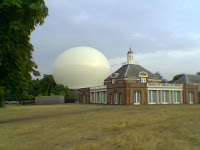
At last we have another holiday planned before the summer is over. Our rather expensive trip to Norway in May had heightened Dave's current sense of inpecunity, and so we have done without a "proper" holiday this summer. However, our friend Dave McI has come to the rescue by inviting us on his 300 mile canal trip from Macclesfield to Reading.
Dave McI owns a 60-foot traditional style British narrowboat (
the Chelonian), and we have spent a number of long weekends on the boat with him, but this is the first time that we will have joined him on such a long trip. Actually, the current plan is for us to do the middle section across the Midlands between Birmingham and the edge of London: six days, 103 miles and 114 locks. It is going to be hard work - particularly as the second day will involve 41 manually operated locks - but it should be good fun as long as the weather behaves.
Actually, I quite like the manually operated locks. They can be very hard work, particularly on the smaller, older canals, but it is good exercise and quite satisfying. Last year we joined Dave McI on a couple of trips on the Thames between Oxford and Weybridge. There all the locks are hydraulically operated by resident lock-keepers, so there is really not much to do other than holding the lines to keep the boat steady as the lock fills/empties. I ended-up getting quite chilly, sitting around not doing very much, and was really relieved when we finally turned into the River Wey navigation, which is improbably old (completed in 1653) and had lots of quaint, attractive, and labour-intensive locks to operate.
The most locks I have operated in one day is 15 (plus 5 swing bridges), and that was quite knackering. So I don't know quite how I'll feel after 40 or so in one day. I am beginning to wonder if it is a good idea to go straight back to work the day after we finish.
The full itinerary is
here, and there are links to maps on Google Maps and Google Earth too.



